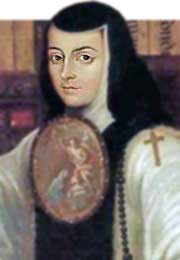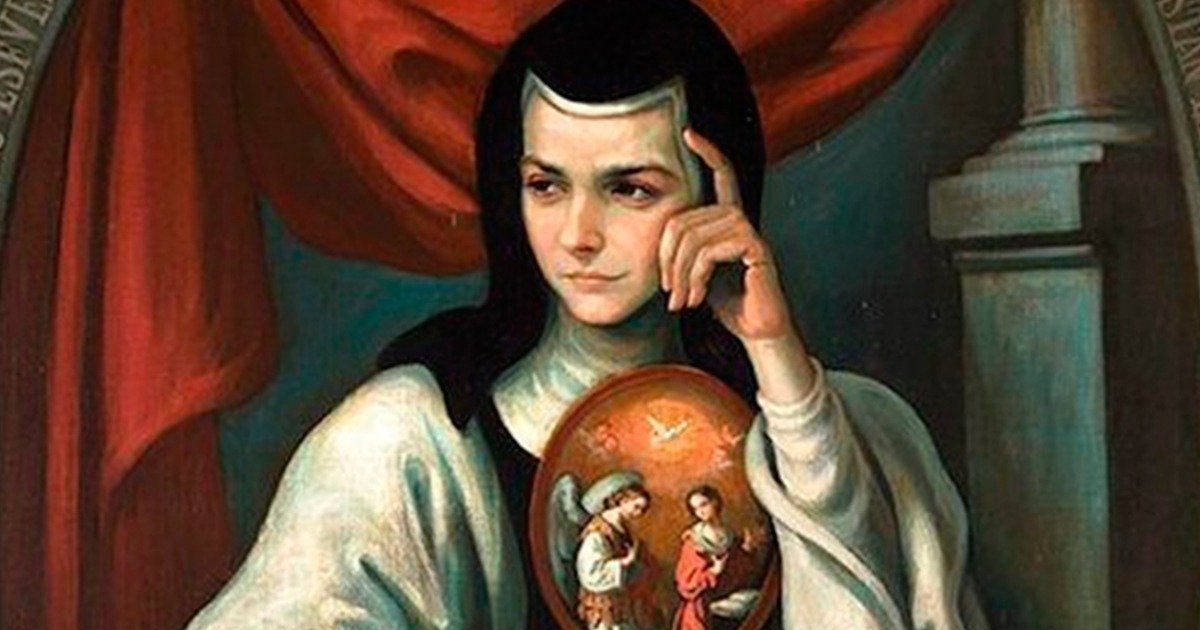
Without the ability to obtain formal education, Juana continued her studies privately. She even asked her mother's permission to disguise herself as a male student so that she could enter the university there, without success. In 1664, at the age of 16, Inés was sent to live in Mexico City.

She also learned the Aztec language of Nahuatl and wrote some short poems in that language. By adolescence, Inés had mastered Greek logic, and at age thirteen she was teaching Latin to young children. At age eight, she composed a poem on the Eucharist. By the age of five, she reportedly could do accounts.
BIOGRAFIA SOR JUANA INES DE LA CRUZ HOW TO
By the age of three, she had learned how to read and write Latin. Statue of Sor Juana Inés in Madrid, Spain.ĭuring her childhood, Inés often hid in the hacienda chapel to read her grandfather's books from the adjoining library, something forbidden to girls. Later described as child prodigy, Sor Juana was home-educated at the Hacienda de Panoaya, becoming fluent in both Latin and Nahuatl, philosophy, and mathematics, allowed to access freely her grandfather's private library.

Amongst her relatives, several women with the name "Inés" have been noted, included her grandmother Inés de Brenes, her maternal-aunt Inés Ramírez de Santillana, and her first-cousin Inés de Brenes y Mendoza, married to a grandson of Antonio de Saavedra Guzmán, the first ever published American-born poet.

Despite having had an occasional contact with her father as a child, Sor Juana's infancy occurred entirely around her mother's family in the hacienda of Panaoya, in Amecameca, leased by her maternal grandfather, and home to the ample Ramírez de Santillana family. There is, nevertheless agreement that she was one of the three children that Doña Isabel Ramírez de Santillana had out of wedlock with Don Pedro de Asuaje. There are two different baptism registrations that have been attributed to her, one under the name of "Juana" in 1648, and another one under the name of "Inés" in 1651, still a matter of academic research and debate. Juana was born in San Miguel Nepantla (presently Nepantla de Sor Juana Inés de la Cruz) near Mexico City as the illegitimate child of Don Pedro Manuel de Asuaje y Vargas-Machuca, a Spanish navy captain from the Canary Islands involved in colonial transatlantic shipping and trade, and Doña Isabel Ramírez de Santillana y Rendón, a distinguished criolla, whose father leased the Hacienda de Panoaya, near Mexico City.

Life Early life Hacienda of Panoaya in Amecameca, residence of the Ramírez de Santillana family. Throughout history Sor Juana's significance to different communities has varied significantly, having been presented as a candidate for Catholic sainthood, a symbol of Mexican nationalism, freedom of speech, women's rights, sexual diversity, and others, making her a figure of great controversy and debate to this day. As a Spanish- criolla from the New Spain, she was amongst the main American-born contributors to the Spanish Golden Age, alongside Juan Ruiz de Alarcón and Garcilaso de la Vega " el Inca", and presently considered one of the most important female authors in Spanish language and Mexico's literary history. Juana de Asuaje y Ramírez de Santillana, better known as Sor Juana Inés de la Cruz OSH (12 November 1648 – 17 April 1695), was a colonial Mexican writer, philosopher, composer and poet of the Baroque period, as well as a Hieronymite nun, nicknamed " The Tenth Muse" and " The Phoenix of America" by her contemporary critics. Manuscript page from “Libro de professiones y elecciones de prioras y vicarias del Convento de San Gerónimo,” 1586–1713, which Sor Juana signed in ink and her own blood.


 0 kommentar(er)
0 kommentar(er)
